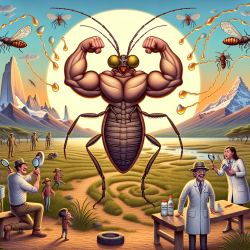Introduction
In the ongoing battle against Chagas disease, the effectiveness of vector control strategies is paramount. Recent research highlights a growing concern: the emergence of pyrethroid resistance in Triatoma infestans, a primary vector of Chagas disease, across the Argentine Chaco. This development poses significant challenges to traditional vector control methods and calls for data-driven adaptations to ensure effective management.
Understanding the Research
The study titled "Improved vector control of Triatoma infestans limited by emerging pyrethroid resistance across an urban-to-rural gradient in the Argentine Chaco" provides a comprehensive analysis of vector control efforts from 2011 to 2019. The research highlights the limited success of routine pyrethroid spraying campaigns due to emerging resistance, particularly in rural areas.
Key Findings
- Initial pyrethroid spraying campaigns (2011-2013) achieved limited success, with house infestation rates returning to pre-intervention levels within 3-4 years.
- The 2015-2019 intervention package, which included community mobilization and school-based interventions, showed improved outcomes but was still hindered by pyrethroid resistance.
- Pyrethroid resistance was detected in 83% of post-spraying triatomine populations, compared to only 7% before interventions.
- House infestation and bug abundance were significantly higher in previously infested or high-risk houses, indicating persistent foci.
Implications for Practitioners
For practitioners in the field of vector control, these findings underscore the importance of adapting strategies to address pyrethroid resistance. Here are some actionable steps:
- Enhanced Surveillance: Implement comprehensive monitoring of insecticide resistance to tailor interventions effectively.
- Community Engagement: Strengthen community-based surveillance and education to improve participation and awareness.
- Alternative Insecticides: Explore and integrate alternative insecticides or non-chemical methods to manage resistant populations.
- Data-Driven Decisions: Utilize data from previous interventions to inform future strategies and optimize resource allocation.
Conclusion
The emergence of pyrethroid resistance in Triatoma infestans is a pressing challenge that requires innovative and adaptive approaches. By leveraging data-driven insights and engaging communities, practitioners can enhance the effectiveness of vector control programs and work towards sustainable management of Chagas disease vectors.
To read the original research paper, please follow this link: Improved vector control of Triatoma infestans limited by emerging pyrethroid resistance across an urban-to-rural gradient in the Argentine Chaco.










